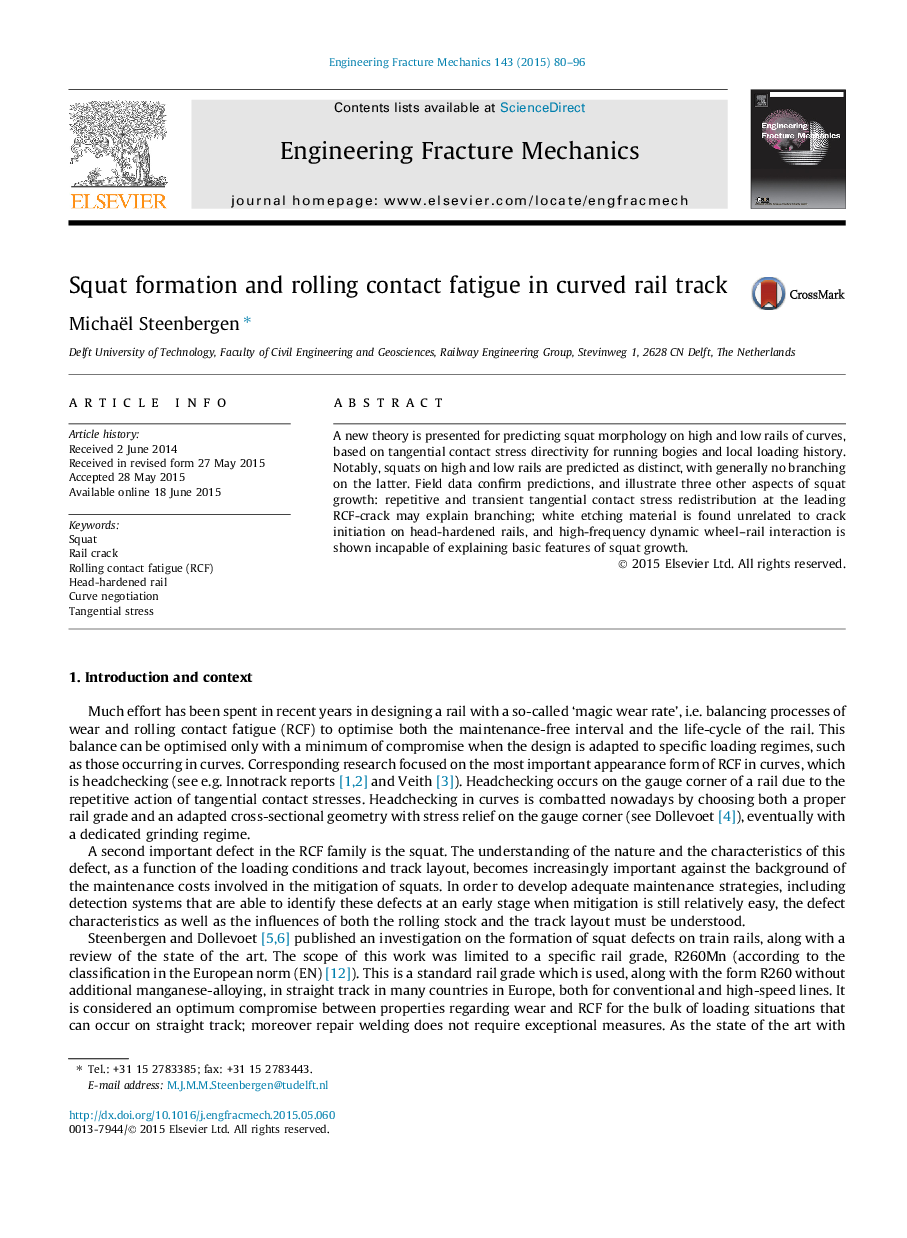| Article ID | Journal | Published Year | Pages | File Type |
|---|---|---|---|---|
| 770241 | Engineering Fracture Mechanics | 2015 | 17 Pages |
•Tangential stress directivity and history on high/low rails of curves govern RCF.•A hypothesis is formulated/validated for squat morphology on high versus low rails.•Cyclic tangential contact stress redistribution may explain squat branching.•White etching material is found unrelated to crack initiation on premium rail.•Dynamic wheel–rail interaction is shown incapable of growing squats.
A new theory is presented for predicting squat morphology on high and low rails of curves, based on tangential contact stress directivity for running bogies and local loading history. Notably, squats on high and low rails are predicted as distinct, with generally no branching on the latter. Field data confirm predictions, and illustrate three other aspects of squat growth: repetitive and transient tangential contact stress redistribution at the leading RCF-crack may explain branching; white etching material is found unrelated to crack initiation on head-hardened rails, and high-frequency dynamic wheel–rail interaction is shown incapable of explaining basic features of squat growth.
